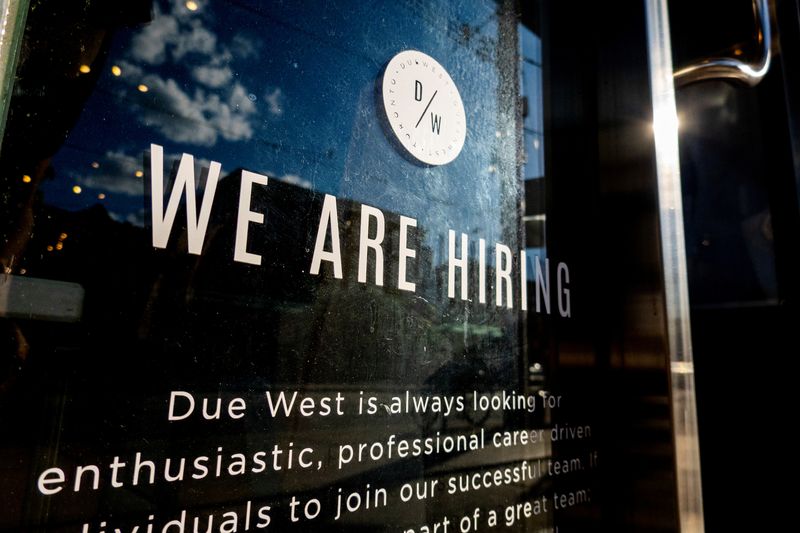By Promit Mukherjee
OTTAWA (Reuters) -Canada's unemployment rate edged up to 6.6% in August, scaling past a seven-year peak excluding the pandemic years of 2020 and 2021, data showed on Friday, prompting economists to call for larger rate cuts from the central bank.
The Bank of Canada this week trimmed its key policy rate by 25 basis points to 4.25%, its third such move in a row and Governor Tiff Macklem said that deeper rate cuts could be implemented if the economy needed support.
The economy added a net 22,100 jobs in August, a rebound from a drop last month but fully driven by part-time employment, Statistics Canada said.
Analysts polled by Reuters had forecast a jobless rate of 6.5% and net job additions of 25,000 in August.
"We continue to see a significant chance that central bankers will need to lower the policy rate in October by 50bps to avoid falling behind the curve," Royce Mendes, head of macro strategy at Desjardins Group, wrote in a report.
He said, however, that more data between now and the next monetary policy decision later in October would help in firming up the likelihood of a larger cut.
Financial markets trimmed their expectations of a rate cut in October to 93% from 98% before Friday's announcement. Traders are fully pricing in two 25 basis point rates cut by December, with a small minority also factoring in a jumbo 50 basis point cut next month.
The Canadian dollar weakened by 0.13% to C$1.3520 to the U.S. dollar, or 73.96 U.S. cents. Yields on the two-year government bond fell a basis point to 3.272% at 1330 GMT.
Canada's unemployment rate has risen by 1.6 percentage points since January 2023, which some economists have called alarming and pressed for deeper rate cuts to prop up growth.
The rise in unemployment was largest amongst the youth aged 15 to 24 on a year over year basis and the rate of joblessness this summer amongst them was highest in eight years.
Slow employment growth was one of the reasons that could temper robust GDP growth projections for the third quarter, Macklem said during his remarks this week.
Economic growth flattened out in June and is likely to be the same in July. At this rate, it could fall short of the 2.8% growth projected by the BoC for the third quarter, economists have said.
"This report highlights the steady build-up of slack in the Canadian economy and specifically in the labor market," Doug Porter, chief economist at BMO Capital Markets said.
"Odds of a 50 bp (basis point) rate cut are building," he said.
As GDP growth has lagged population growth in Canada, unemployment has crawled up, stoking fears of a recession.

The employment rate, or the number of people with jobs out of the total working age population of 15 years and older, has been steadily falling and hit 60.8% in August, Statscan said. It has fallen in 10 out of the last 11 months.
The average hourly wage growth of permanent employees slowed to an annual rate of 4.9% in August from 5.2% in July, the statistics agency said. The wage growth figure, which has been partly responsible for keeping inflation high, is closely watched by the BoC.